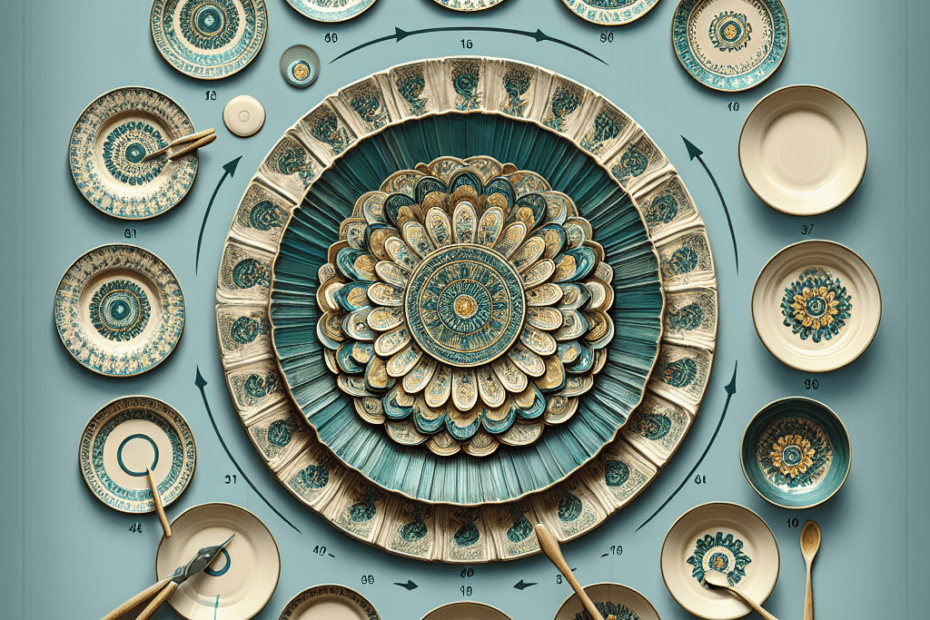“`html
Transforming Vintage Plates into Unique Wall Art
Upcycling is an innovative and eco-friendly trend capturing the imagination of creative enthusiasts all over the world. When it comes to upcycled plate wall art, people have discovered a unique way to give old, vintage plates a new purpose and aesthetic appeal. Transforming these plates into vibrant wall decor not only breathes new life into them but also adds a distinctive, personalized touch to any home.
Why Choose Upcycled Plate Wall Art?
Upcycling vintage plates into wall art is an eco-conscious choice that helps foster sustainability by reducing waste. According to the Environmental Protection Agency (EPA), the United States generated approximately 292 million tons of municipal solid waste in 2018, of which about 35.3% was recycled or composted[source]. By upcycling, they contribute to lowering this number, turning waste into creative treasures.
Materials and Tools Needed
| Materials | Tools |
|---|---|
| Vintage plates | Plate hangers or adhesive plate hangers |
| Wire or hooks | Level and measuring tape |
| Artistic paint (optional) | Drill or hammer (if using hooks) |
Steps for Creating Upcycled Plate Wall Art
1. Selecting the Right Plates
The first step is to select vintage plates with appealing patterns and colors that complement one another. They should look for plates in antique shops, flea markets, or even in their own kitchen cabinets. When selecting, they’re encouraged to inspect for cracks or chips that might affect the plate’s longevity on the wall. A mix of sizes and designs can create a dynamic and visually intriguing arrangement.
2. Planning the Display
They should lay out a preliminary design on the floor to visualize how the plates will look on the wall. Arranging the plates with various distances and overlapping angles can create an interesting art piece. Using a measuring tape and level ensures a balanced and well-spaced setup.
3. Preparing the Plates for Hanging
Before hanging, they need to decide between plate hangers or adhesives. Plate hangers are traditional and reliable, shaped like prongs that hold the plate securely from behind. Adhesive hangers are newer and stick to the back of the plate, providing a seamless look. It’s essential to follow product instructions to make sure the plates are secure.
4. Installing Your Plate Wall Art
Using a drill or hammer, they install hooks or nails where each plate will go. For adhesive hangers, they press the plate onto the wall according to the layout plan prepared earlier. Checking alignment with a level is key to achieving a professional look.
5. Adding an Artistic Touch
If they want to modify the vintage plates further, integrating hand-painted details or finishes can add a personal touch. Acrylic or ceramic paints are suitable for this kind of enhancement, and they can add pops of color or intricate designs to customize their upcycled plate wall art completely.
Key Takeaways
- Upcycling vintage plates helps in sustainable decoration.
- Proper selection and arrangement of plates contribute to appealing wall art.
- Use plate hangers or adhesive hangers based on preference and wall type.
- Additional artistic touches can personalize the final product.
FAQs
1. Where can they find vintage plates for wall art?
They can find vintage plates at antique shops, flea markets, online marketplaces, or even thrift stores.
2. What plates should be avoided in wall art projects?
They should avoid plates with significant damage like deep cracks or extensive wear, as they may not hold up well when hung on a wall.
3. How do adhesive plate hangers work?
Adhesive plate hangers use a glue-like pad that sticks to the back of a plate, allowing it to hang flat against the wall without visible hooks.
4. Can they paint the vintage plates before hanging?
Yes, they can use suitable paints like acrylics or ceramics to customize their plates before adding them to the wall art display.
5. Is it necessary to use a level when arranging the plates?
Using a level helps ensure that the arrangement is even and professional-looking, making it a recommended step in the process.
“`
By converting old treasures into upcycled plate wall art, individuals engage in an artistic endeavor that also supports sustainability. As they transform vintage plates into beautiful wall displays, they foster creativity while contributing to a greener world.
